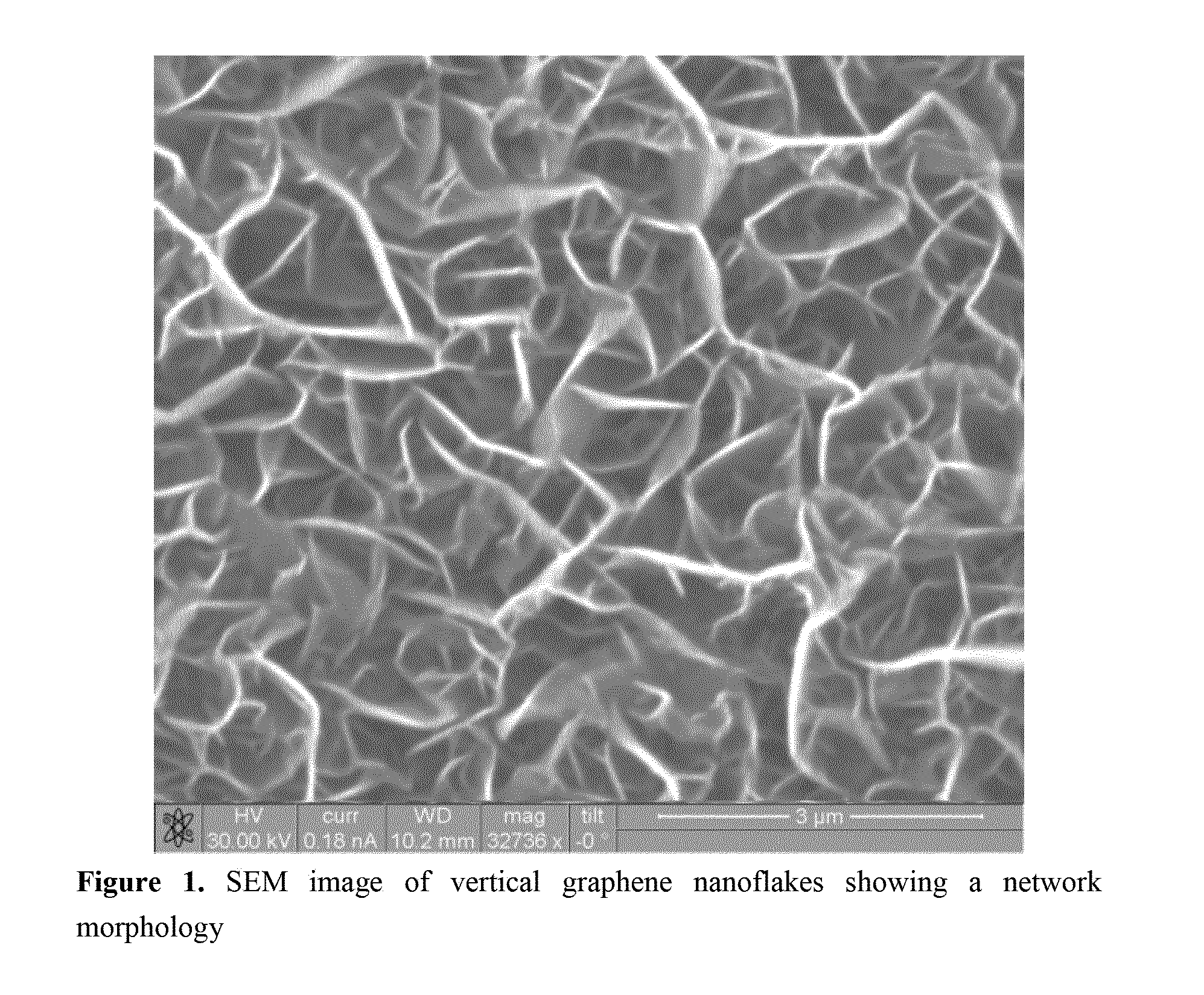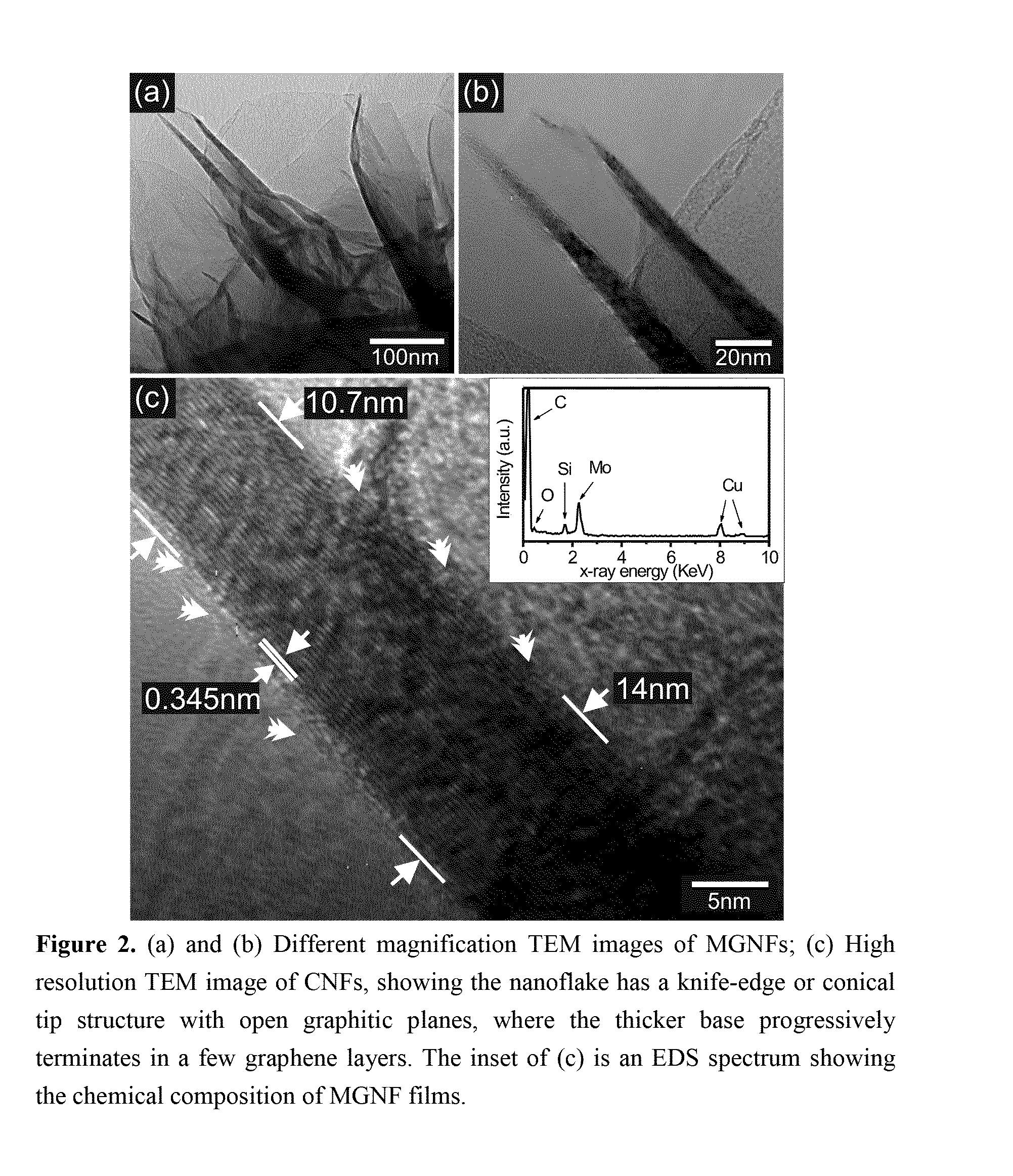Anti-corrosion coatings
- Summary
- Abstract
- Description
- Claims
- Application Information
AI Technical Summary
Benefits of technology
Problems solved by technology
Method used
Image
Examples
examples
[0080]In this work we have examined the behaviour of bare copper , annealed copper, graphene coated copper and Si incorporated copper in saline solution as well as after exposure to air at elevated temperature of 200° C. for 1 hour.
[0081]Sample Preparation
[0082]A SEKI Technotron ECR-MPCVD system (2.45 GHz, 1.5 KW), was used to deposit Si incorporated graphene films. Briefly the system was pumped down to base pressure of 2.8 10-5 Torr and was operated in ECR mode. Cu foils 25 μm thick (99.999%, Alfa Aesar No. 10950) were initially etched for 3-4 minutes at room temperature in an Ar plasma using microwave power of 100W. Then the temperature was raised to approximately 900° C. and the samples are heated in a background pressure of 40 Torr of N2.
[0083]Graphene and silicon incorporated graphene were synthesised in a gas mixture of methane and argon and TMS (tetramethylsilane—Si(CH3)4 with gas flow rates of 6, 3 and 0 to 10 sccm (standard cubic centimetres per minute) respectively. Deposi...
PUM
| Property | Measurement | Unit |
|---|---|---|
| Fraction | aaaaa | aaaaa |
| Fraction | aaaaa | aaaaa |
| Fraction | aaaaa | aaaaa |
Abstract
Description
Claims
Application Information
 Login to View More
Login to View More - R&D Engineer
- R&D Manager
- IP Professional
- Industry Leading Data Capabilities
- Powerful AI technology
- Patent DNA Extraction
Browse by: Latest US Patents, China's latest patents, Technical Efficacy Thesaurus, Application Domain, Technology Topic, Popular Technical Reports.
© 2024 PatSnap. All rights reserved.Legal|Privacy policy|Modern Slavery Act Transparency Statement|Sitemap|About US| Contact US: help@patsnap.com










